Haven't worked with high voltage much before, I'm trying to use a spark gap to ionize some gas. I have 5 kV on one side, and a plate attached to ground on the other. The 5 kV will switch on as needed, but I want to make sure the current doesn't exceed 500 µA. Can I put a 10 MΩ resistor in series that has a breakdown voltage and power rating enough to withstand it and be done? Am I underthinking it, overthinking it?
-
20– user234461 Dec 01 '22 at 14:31
-
9What a question, with even 6 upvotes for Shows research effort , Useful and Clear. Is this AC or DC? What do you mean with ionizing? What gas? Gasoline? Withstand what? Why 500 uA is that peak or average? Why resistor? A car engine makes lots of ionizing sparks without R. In some applications a cap or coil may be useful. Not much HV experience, and in a comment, a 5V and below kind of guy, letting it be handled by someone else LOL – Roland Dec 01 '22 at 15:40
-
5I made a stupid mistake as a student when trying something similar with a 20 kV power supply (from an old "tube"-TV). Chose several resistors in series, with a total of "sufficiently many" MΩ. I was not aware that the "standard" type of the resistor I had available was internally made of wound up wire - essentially a coil. Together with the high voltage supply the coil acted as an accidental LC-circuit and as such as a wireless transmitter. It reliably crashed all the computers in the room. – thomastiger Dec 02 '22 at 20:37
3 Answers
Andy's caution about adding a current-limiting resistor correctly might benefit from an example showing how it can be done incorrectly.
The 5kV dangerous source might be connected to the apparatus where gas is to be ionized via a coaxial cable, whose shield is at ground potential and whose inner conductor carries the 5kV voltage. Completely enclosed by ground, you think that you are protected from a 5kV discharge. But where you add the current-limiting resistor does matter.
- If you add it to the source-end of coax - it is not so safe.
- The safer connection point is at the far end where gas is ionized.
Why? Coax has capacitance that stores energy. At left, while the 10M resistor limits how fast energy is stored in that capacitance, it doesn't limit how fast your body can accept that energy at the probe-end. Discharge current can be significantly higher than 500uA.

simulate this circuit – Schematic created using CircuitLab
If your intent is to protect the 5kV supply from overcurrent, the left connection of 10M resistor is correct.
If your intent is to protect you from 5kV discharge, the right connection is correct.
- 23,591
- 1
- 22
- 50
-
5It might be best to add 5 megohms at the source, and also 5 megohms at the termination, to assure that worst case touching either end of the cable would result in no more than 1 mA current. Possibly an uncomfortable shock, but almost certainly not enough to be lethal for a healthy person. – PStechPaul Dec 01 '22 at 05:57
-
1@PStechPaul: Won't that necessarily give a higher current discharge due to capacitance? – R.. GitHub STOP HELPING ICE Dec 01 '22 at 14:27
-
-
1@R..GitHubSTOPHELPINGICE: Higher than what? PStechPaul assumed the parasitic capacitance charged to the full 5kV through one resistor, then discharged through the other. The peak current for both charge and discharge will occur at the peak voltage, 5kV, and Ohm's Law gives the same 1mA result that PStechPaul gave. 1mA is 1000uA; this is twice the value discussed in the question and answer, a tradeoff for having the limit on both charge and discharge. – Ben Voigt Dec 01 '22 at 19:57
-
2Presumably the 5kV source has relatively high current capacity, perhaps due to a capacitor, and the cable has a fairly small capacitance, so this arrangement might initially provide a short 1 mA current pulse, followed by a continuous 500 uA. – PStechPaul Dec 01 '22 at 21:53
-
2Will someone really be injured by the capacitance of a coax cable charged to 5kV? If we assume 100pF per meter of cable, 2 metes of cable, and 5kV that's 2.5mJ of energy. That's actually a lot less than the energy content of typical ESD events experienced by the human body. For ESD purposes a human can be modeled as a capacitance of 60~300pF. Typical ESD voltages are 5K~30kV. Typical energy content may be tens of mJ. See, "An Investigation of Human Body Electrostatic Discharge", M.A. Kelly, G.E. Servais and T.V. Pfaffenbach, Delco Electronics. http://www.aecouncil.com/Papers/aec1.pdf – user4574 Dec 02 '22 at 17:21
-
1I agree with @PStechPaul. Splitting the resistor into two 5Mohm resistors is probably the right approach. Having only a 10M resistor at the end of the cable allows unlimited current to flow if the cable is damaged/cut/pinched anywhere along its length, and also allows someone to be shocked at the source if the cable is disconnected. Protection is probably needed at both ends. – user4574 Dec 02 '22 at 17:40
-
@user4574 Your argument is valid - the OP set 500uA as an upper limit - I've demonstrated how this can be exceeded, even with resistor current limiting. – glen_geek Dec 02 '22 at 17:57
Can I put a 10Meg Ohm resistor in series that has a breakdown voltage and power rating enough to withstand it and be done?
Yes you can do that. Multiple resistors in series will help.
Haven't worked with high voltage much before
5 kV is quite likely to be very lethal if you don't do this correctly. I'd go for ten series 1 MΩ resistors rated at 750 volts each: -
Image of PR03000201004JAC00. And, make sure they are not snaked back on each other without applying cut-outs in the PCB to get the clearance required.
- 434,556
- 28
- 351
- 777
-
4Thank you! Not to worry, I won't be physically handling it myself (I'm a "5V and below" kind of guy), it'll be assembled and operated by someone properly trained. – Shredder Nov 30 '22 at 18:59
-
22As the designer, you will be responsible for ensuring that the design and instructions to test (and use it) are OK for 5 kV operation. You can't just get away with saying you won't be using it. – Andy aka Nov 30 '22 at 20:13
-
1
-
7Things like creepage may be important, as well as unusual properties of materials with high electric field densities (eg varnishes, etc), humidity, etc. Probably failure modes would suggest multiple components for the resistor chain. Best to leave it to someone who has training and proper experience, tbh. – Dan Sheppard Nov 30 '22 at 20:54
-
5
-
2I mean who says that Shredder is responsible for anything? This is about electronics, not law. – Niels Nov 30 '22 at 21:16
-
28@Niels incorrect. EE design has a very strong legal responsibility as any type of design work has. – Andy aka Nov 30 '22 at 21:18
-
12
-
14@Niels. Irrelevant. Very high voltages have radically different design requirements that conveniently low voltages don't. You don't have to always think about lawyers, law and litigation. We know that people from some countries are obsessed with lawyers and suing and courts but it's them who get it wrong, not those who find it perfectly normal to have a feeling of responsibility towards people using your advice or design without restricting it to legal questions. – Gábor Dec 01 '22 at 12:57
-
10@Niels "This is about electronics, not law", sorry, but this is wrong. Safety concerns *are* also about law, especially if the OP states that the thing won't be operated by himself. Many developed countries have very strong laws about safety on the workplace, whose violations lead to injuries and deaths every year. This can get to criminal law very quickly: if an engineer doesn't exert due diligence in his design work he could be held *criminally* responsible for any injuries or death caused by other people using his design. – LorenzoDonati4Ukraine-OnStrike Dec 01 '22 at 15:18
-
6@Niels BTW, Would you want to live in a building where the engineer botched its design just because it didn't exert due diligence? After all, "that is about civil engineering, not law". – LorenzoDonati4Ukraine-OnStrike Dec 01 '22 at 15:19
-
3Guys you're misinterpreting what I said, I'm not saying I won't do due diligence to ensure the device is safe to the operator, just that I literally am not the one physically putting it together. Obviously it is my responsibility to make sure that it is safe for qualified handlers, wasn't implying otherwise. – Shredder Dec 01 '22 at 15:22
-
10@Shredder nobody is having a go at you. The person under the spotlight here is someone else. – Andy aka Dec 01 '22 at 15:48
-
17@Shredder Stack Exchange questions aren't just for _you_; they're also for people who _shouldn't be working with electricity_ who might happen to visit this page, and need yelling at. Any time somebody spots a chance to give safety advice, they usually give it. – wizzwizz4 Dec 01 '22 at 15:50
-
1The OP asked about "I'm trying to use a spark gap to ionize some gas", so I get under the impression this is an experimental setup. In every free country you can buy stuff that is dangerous and you are free to do with it as you please (as long as not intentionally harming any others). If this is a professional setup matters are of course different and protected by law but then again have a look at the url in your browser right now. It is not really the place to discuss law. – Niels Dec 01 '22 at 16:33
-
4
-
7@Niels "In every free country you can buy stuff that is dangerous and you are free to do with it as you please (as long as not intentionally harming any others).". Sorry, but again wrong. In many democratic and free countries there are restrictions on hazardous materials (e.g., in Italy you cannot go purchasing high-concentration nitric acid willy-nilly without a license, because it is a precursor for explosives). ... – LorenzoDonati4Ukraine-OnStrike Dec 01 '22 at 17:09
-
5@Niels ... And even if you buy non-restricted materials, you cannot use them to build some restricted devices (e.g., in Italy you cannot own an unlicensed gun, even if you were able to build it yourself using your basement CNC machine and raw materials). – LorenzoDonati4Ukraine-OnStrike Dec 01 '22 at 17:10
-
4"I'm a 5V and below kind of guy" really means you haven't a remote clue what you are doing and will kill someone. Nice... kind of like saying "I'm a video game commando but can hang with Seal Team 6" lol – SnakeDoc Dec 02 '22 at 00:02
In addition to the cautionary notes expressed in other answers, keep in mind that typical voltage ratings on resistors are for DC or low frequency AC applied to the resistor.
Spark gaps, depending on what is around them, are quite good at creating relatively powerful broadband MHz RF AC (in fact they were used as the RF source in early wireless radio telegraphy radio transmitters, in conjunction with tuned circuits). I would suggest contacting the engineering department of the HV resistor supplier and allowing a generous safety margin. Also ensure that if the resistor (or anything else) does fail in the worst possible way it cannot possibly cause harm to anything living and cannot cause intolerable material loss.
- 376,485
- 21
- 320
- 842
